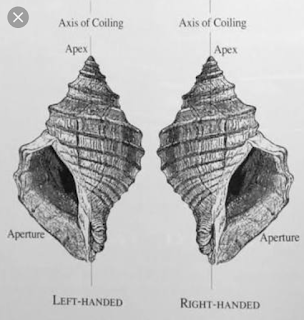Replication of DNA
Replication is commonly known as self duplication.
But why DNA replicates? 🤔🤔
DNA transfer inherited characters form generation to next generation. So DNA has to produce it's duplicate copy.
Replication is autocatalytic function of DNA. A simple mechanism of replication was proposed by Watson and Crick, on the basis of double helical structure of DNA.
To know more about structure and function of DNA click here (https://singhsardarni.blogspot.com/2020/09/dna-structue-and-functions.html)
The method of DNA replication is described as semi -conservative method. In this method ,the two strands will act as template strands for synthesis of new complementary strands. After replication, new DNA will have one daughter strand and one parental strand .
But where is the evidence?
DNA replicates semi conservatively was proved by Meselson and Stahl in 1958.
They performed the following experiment with E. Coli.
- They grew E. Coli in medium of 15NH4Cl for many generations. It was found that both strands of DNA contained 15N (it is heavy isotope of nitrogen so it can easily distinguished by centrifugation in cesium chloride density gradient.
- After this these bacteria were placed in medium containing 14N. Newly formed DNA was with a old stand of 15 N isotope and new strand of 14N.
- DNA such formed was to be hybrid. During second replication in normal 15N medium both the strands again separated.
- It was observed that out of four DNA molecules formed two were completely non-radioactive and the remaining two were with one half radioactive and another half non-radioactive strands.
He also demonstrated the semi -conservative mode of replication in DNA and chromosomes in root tip cells of Cocoa faba. After the incorporation of radioactive thymidine 3H, the root tips were transferred to unlabelled medium containing colchicine. Radioactive chromosome appeared in the form of scattered black dots of silver grains.
After replication of DNA and constitution of chromosome following facts were noticed :
- It was found in first generation that radioactivity was uniformly distributed in both the chromosomes. In such cases original strand of DNA double helix was labelled with 3H and newly formed strand was non-labelled.
- During second division only one of two chromosomes represented radioactivity by showing one strand radioactive and other non-radioactive.
Mechanism of DNA replication
During semi -conservative mode of replication first, unwinding of double helix takes place. These two strands are easily separable because the hydrogen bonds which holds two stands are very weak in contrast to other chemical bonds. When these two strands separate out, each part of one strand, constitute the complementary part of other strands. Two parental strands do not seperate completely, but are opened up at what is known as replication fork. As a result, opposite A, T would fit, opposite C, G would come and so on.
Due to this process exact nucleotide sequence would be automatically formed. Thus,regeneration of DNA helix occurs, with one strand of original helix combining with freshly formed complement to constitute a double stranded DNA molecule.
This type of replication has been also called as zipper duplication.
Details of DNA replication
Details of DNA replication can be discussed under these headings:
- Activation of deoxyribonucleotides
- Recognition of initiation point
- Unwinding of DNA molecule
- Formation of RNA primer
- Formation of new DNA chains
- Removal of RNA primers
- Proof reading and DNA repair
- Activation of deoxyribonucleotides: The four nucleosides of DNA are floating free in nucleus. They all are activated by ATP to form deoxyribonucleoside triphosphates. Enzyme required at this step is phosphorylase and step is called phosphorylation.
AMP +ATP --- ATP
GMP+ATP ---GTP
CMP +ATP ---CTP
TMP +ATP--- TTP
- Recognition of initial point : The specific point from where unwinding of DNA molecule start is known as initiation point. For identification of this point molecules specific initiator proteins are needed.
- Unwinding of DNA molecule : Unwinding of helix is helped by helicase enzyme. Topoisomerase helps in relieve the tension of DNA strands. During unwinding of strands replication fork is formed.
- Formation of RNA primer : The DNA directed RNA polymerase forms the RNA primer. The synthesis of RNA primer is brought about by a special RNA polymerase called primase.
- Formation of new DNA chains : The DNA enzyme called DNA polymerase can polymerise the nuckeosides only in 5'to 3'direction. Because the two strands of DNA are in antiparallel direction, the two strands have to be synthesized in opposite directions. On the other strands Okazaki fragments are formed which are joined by DNA ligase.
- Removal of RNA primers : Once the small fragments have been formed. RNA primer is removed from 5'end one by one by the exonuclease activity of DNA polymerase.
- Proof reading and DNA repair : The specificity of bp ensures exact replication. It is possible that wrong bases may get in at a rare frequency of one in 10,000. These bases can be removed by activity of enzyme DNA polymerase . These repair enzyme cut off the defection of segments of DNA and introduce and Join the normal segments.






Nyc 👍👍👍👍
ReplyDeleteNyc 👍👍👍👍
ReplyDeleteAmazing 😄😄
ReplyDeleteGreat job 🤩🤩
ReplyDeleteThnx to all
ReplyDelete